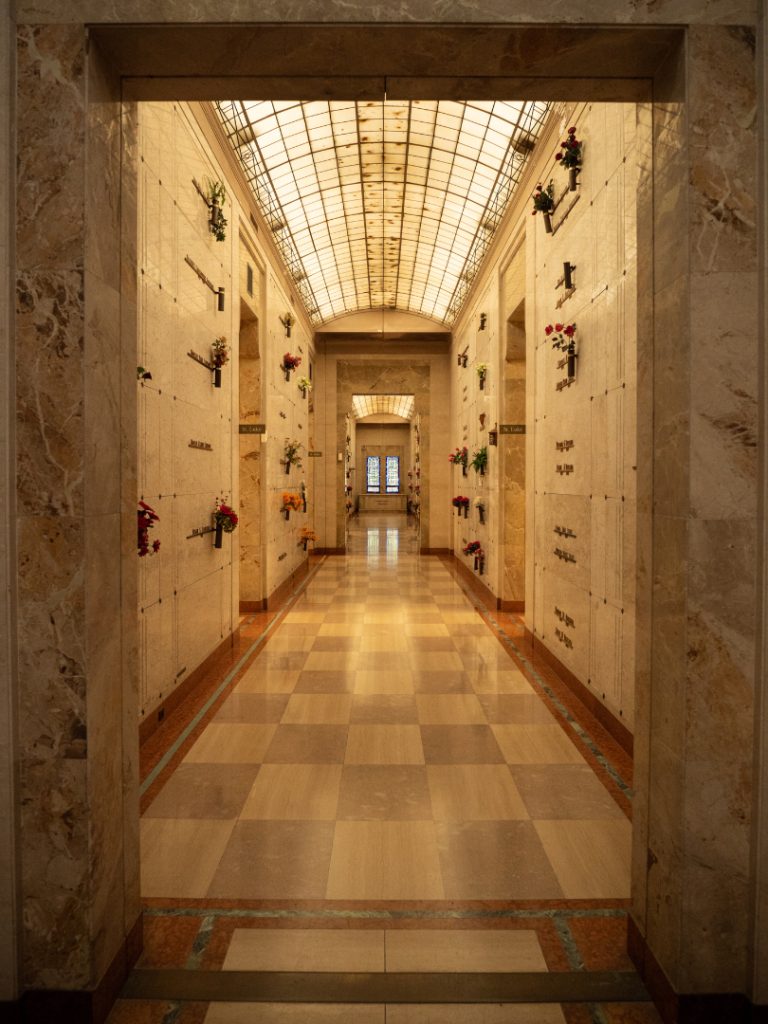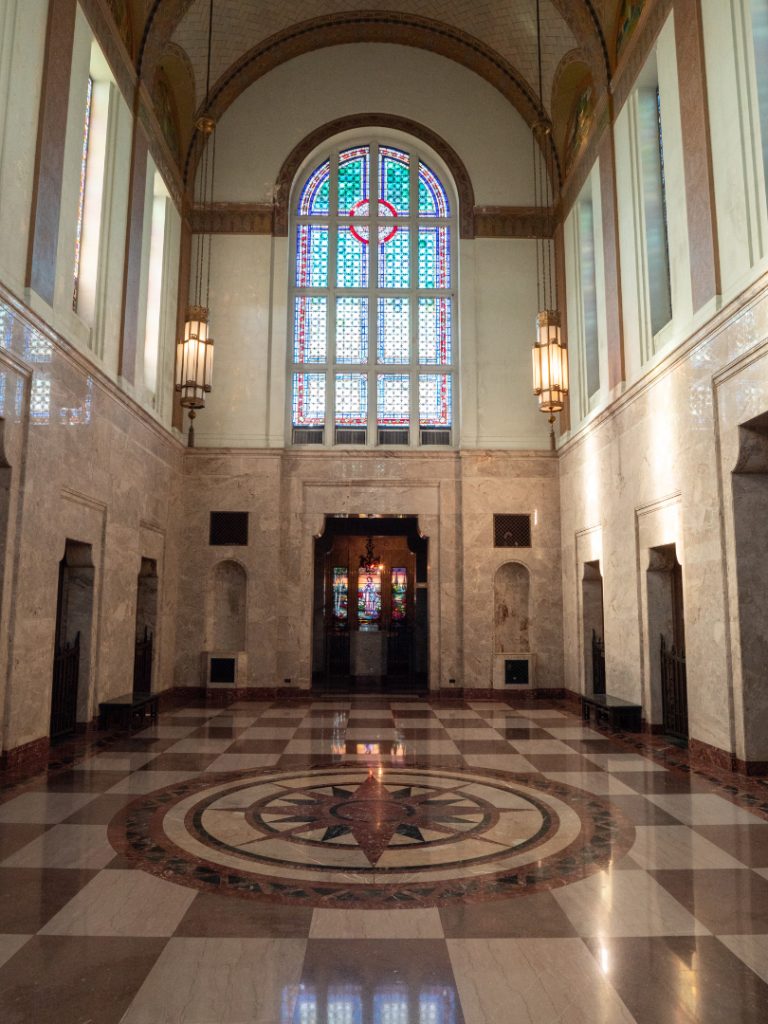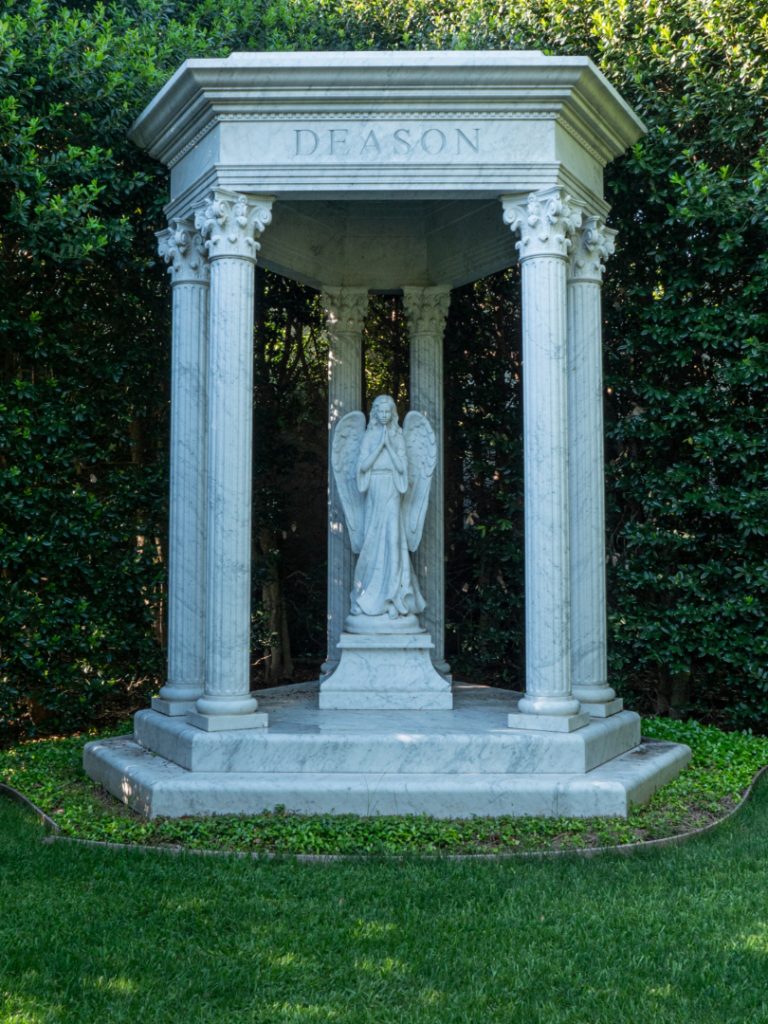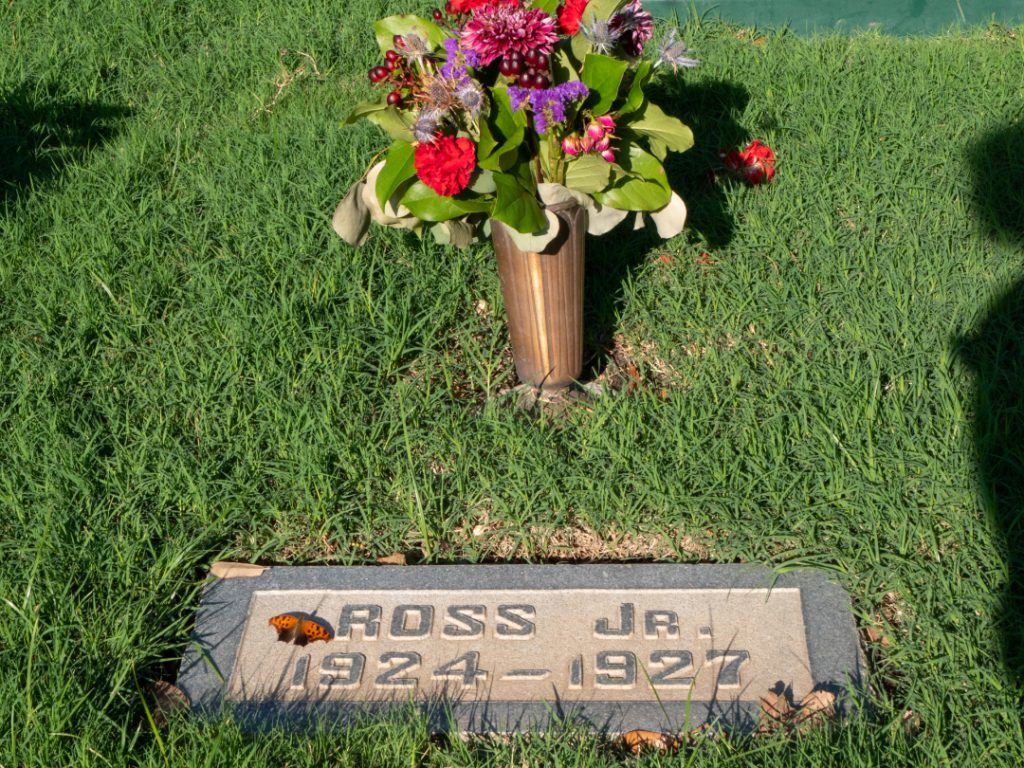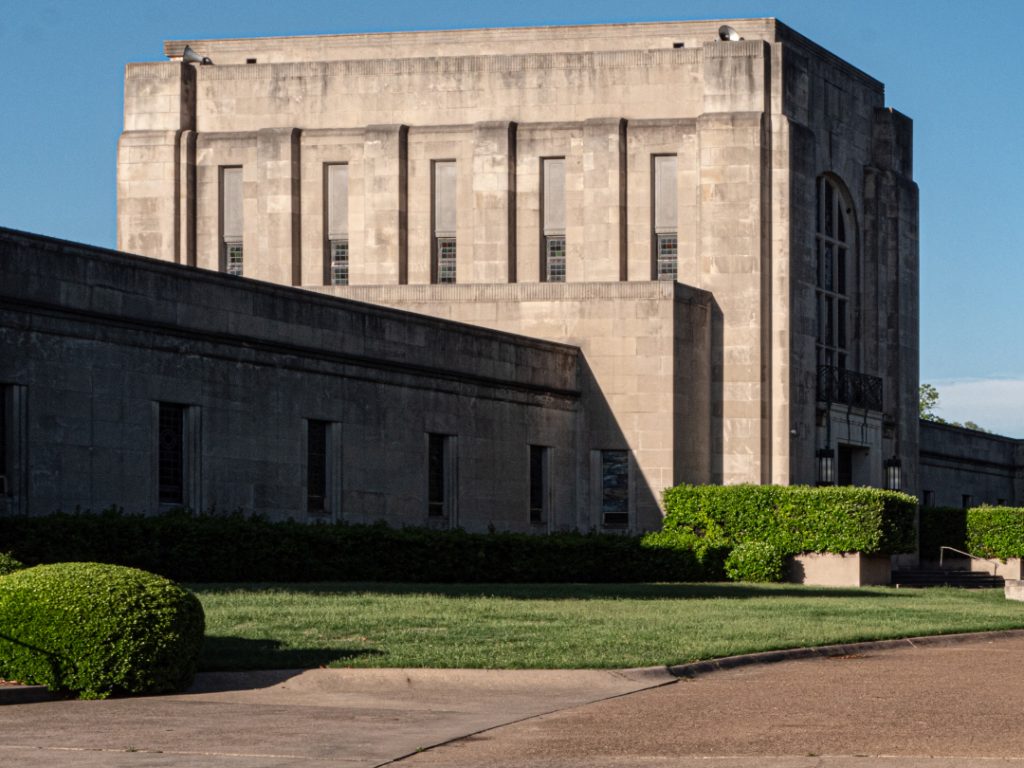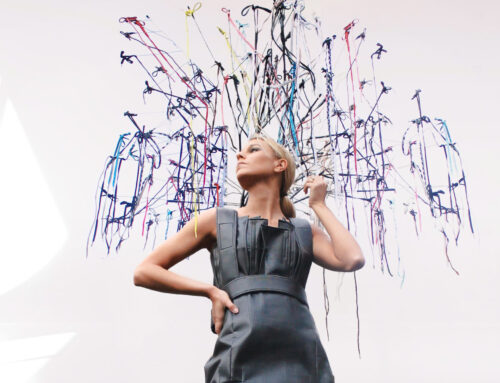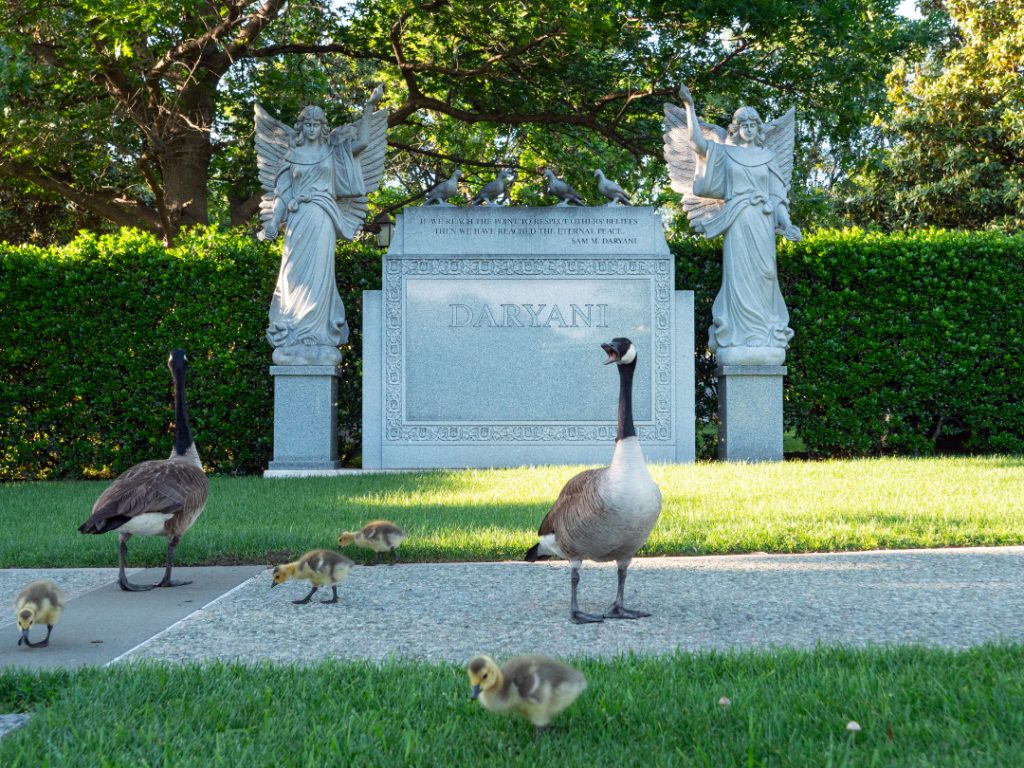
Photography by Johnathan Johnson
There is a place in Dallas where nine of our city’s most important architects, one of the world’s greatest bluesmen, a football saint, an Oscar winner and a sheriff who helped take down Bonnie and Clyde are remembered.
Sparkman-Hillcrest Funeral Home and Memorial Park’s 88 acres are the final resting places of some of Dallas’ most prominent citizens, as well as a few all-American characters.
Baseball Hall-of-Famer Mickey Mantle is here. So is former Texas Gov. W. Lee “Pappy” O’Daniel.
Sparkman-Hillcrest’s history as a burial ground precedes the incorporation of Dallas as a city, and the cemetery recently won the Stewardship Award from Preservation Dallas.
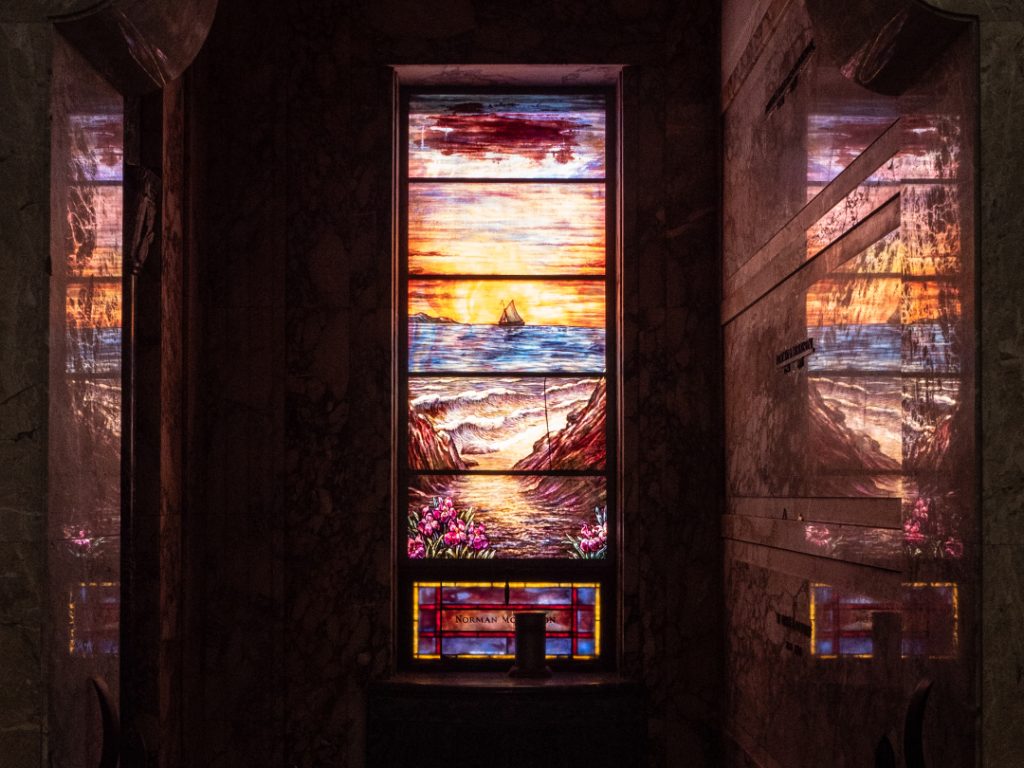
Photography by Johnathan Johnson
In the 1940s, the Caruth family owned about 30,000 acres in Dallas and the surrounding area, including the eventual sites of SMU, NorthPark Center and Sparkman-Hillcrest. When William Barr Caruth arrived in Dallas from Kentucky in 1848, he brought multiple enslaved people, including Edward “Ned” Fields, according to “Slavery and the Postbellum University: The Case of SMU,” a law journal article by Lolita Buckner Inniss and Skyler Arbuckle, published in 2021.
Sparkman-Hillcrest holds the graves of enslaved people who worked on Caruth’s plantation and died in the 1850s.
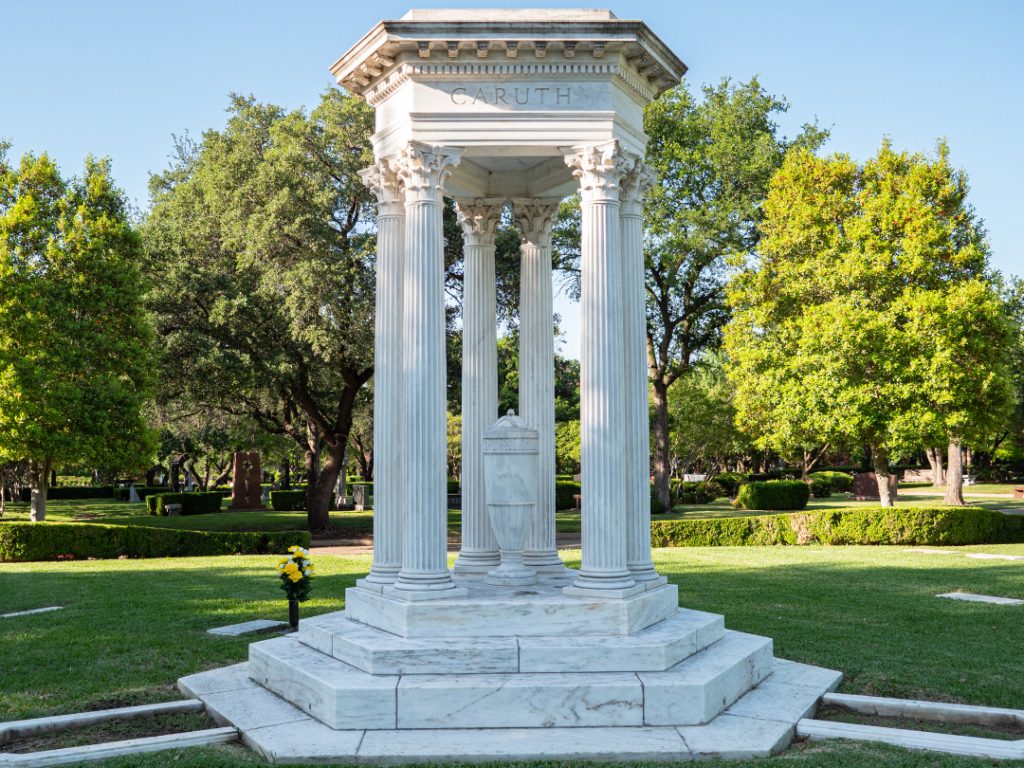
Photography by Johnathan Johnson
“The style of his architecture is pure and classical, reflecting honesty and purity of heart.” —Preservation Dallas
Undertaker George W. Loudermilk began purchasing land from the Caruths for the cemetery in 1893, according to compiled genealogy research on findagrave.com.
“Loudermilk matched teams of horses and beautifully outfitted carriages sporting ‘the only rubber tires in the city’ which became a source of great pride,” states a history from Preservation Dallas. “As the business entered the age of the automobile, hearses were the original ambulances for transporting the sick to hospitals as well as the deceased to the burial ceremony.”
The first of four generations of the Sparkman family began operating the cemetery in 1920, when Will R. Sparkman purchased it and operated under the name Loudermilk-Sparkman for many years.
Sparkman moved his business to the former Belo Mansion in 1926, leasing it for 50 years. The mansion, which still stands at Ross and Pearl streets Downtown, has been renamed the Arts District Mansion.
This was where the body of the outlaw Clyde Barrow was placed on public view in 1934, drawing huge lines of crowds.
Architect Anton Korn designed the Hillcrest Mausoleum, which opened in 1937. Korn also built grand homes in Highland Park and Lakewood.
“The style of his architecture is pure and classical, reflecting honesty and purity of heart,” Preservation Dallas states.
Here are a few of the well-known people buried at Sparkman-Hillcrest, located at 7405 W. Northwest Highway.
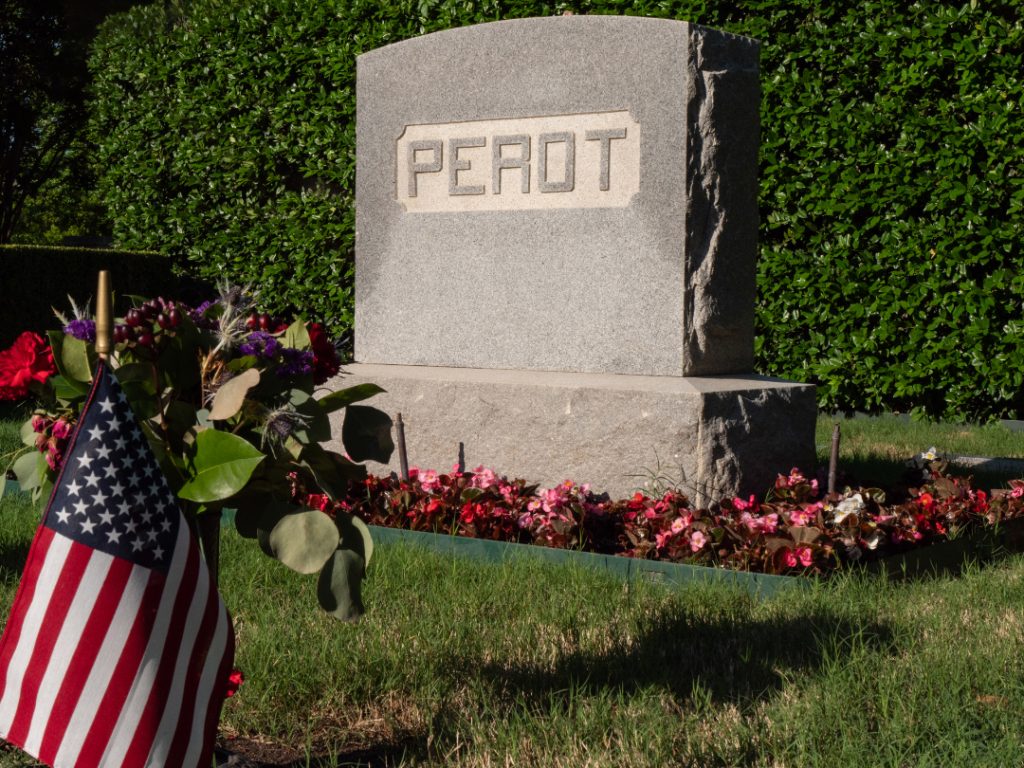
Photography by Johnathan Johnson
Freddie King is known as a Chicago bluesman, because that’s where he became known, but he was born in Gilmer, Texas, and lived in Dallas at the end of his life. In the 1970s, he performed at venues around town, such as the legendary Mother Blues on Lemmon Avenue. He lived a hard life of drinking and touring and died of complications with pancreatitis at age 42 in 1976. King was inducted into the Rock ‘n’ Roll Hall of Fame in 2012.
Tom Landry needs no introduction around here. He was the first head coach of the Dallas Cowboys, leading the team for 29 years. Did you know he had a master’s degree in industrial engineering? That he played seven seasons of professional football before becoming an NFL coach? He died of leukemia in 2000 at age 75, and the honors he has received are too numerous to name.
Greer Garson received seven best-actress Oscar award nominations, winning in 1942 for Mrs. Miniver. Garson was from England, but her third husband was a Texas oilman and horse breeder, and they lived part-time in Dallas starting in the 1960s. She founded the Greer Garson Theatre at Southern Methodist University. She died of heart failure in 1996 at age 91.
Ted Hinton knew Bonnie Parker when she was a waitress at Marco’s Café in Old East Dallas, and he later admitted to having a crush on her. He was a 29-year-old Dallas deputy sheriff in 1934 when he became part of the posse of lawmen who ambushed Bonnie and Clyde at Gibsland, Louisiana. Hinton’s son, the former Dallas County deputy Linton Jay “Boots” Hinton, operated the Ambush Museum in Gibsland from 2004 until his death in 2016. Ted Hinton died in 1977.
- Photography by Johnathan Johnson
- Photography by Johnathan Johnson
- Photography by Johnathan Johnson
- Photography by Johnathan Johnson
- Photography by Johnathan Johnson


